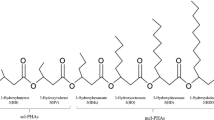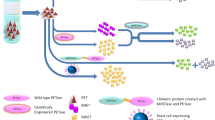Abstract
An environmentally friendly bioprocess for the valorisation of the lupanine enantiomeric mixture existing in lupin bean processing wastewater was developed. Pseudomonas putida LPK411, which is capable of enantioselectively biodegrading lupanine enantiomers, was employed for the resolution of the lupanine racemate content of unrefined and pretreated industrial effluents. The optimal culture conditions for racemic lupanine biodegradation by LPK411 were determined as 31 °C, pH 6–7, and 1.5 g L−1 initial lupanine concentration. The results obtained for enantioselective resolution of the effluents by P. putida LPK411, grown in shake-flasks, and a lab-scale bioreactor under batch operation, demonstrated that lupanine resolution was substantially improved in the bioreactor, exhibiting L-(–)-lupanine enantiomeric excess > 93% for all feedstocks used. Moreover, a fed-batch bioprocess was conducted using racemic lupanine resulting in 53% and 49% enhanced D-( +)-lupanine biodegradation and biomass production compared to the corresponding batch experiment respectively, while L-(–)-lupanine concentration increased by 49%. Monitoring the transcriptional kinetics of luh and crc genes employing industrial wastewater and the alkaloid racemate in synthetic media demonstrated that although expression from the lupanine catabolic route was rapidly induced upon supply of lupanine as a single substrate, LPK411 preferably utilised other carbon molecules of the real effluent over lupanine, suppressing the alkaloid’s catabolic pathway via the carbon catabolite repression regulatory system. The study exemplified the impact of a preferred compound on the main metabolic route of a bioprocess, demonstrating the importance of molecular interactions in biorefineries developed based on the mixture of substrates contained in renewable bioresources. Future research should aim at optimising and up-scaling the enantioselective biodegradation process proposed.






Similar content being viewed by others
Data availability
All data generated or analysed during this study are included in this published article.
References
Valta K, Kosanovic T, Malamis D, Moustakas K, Loizidou M (2015) Overview of water usage and wastewater management in the food and beverage industry. Desalin Water Treat 53:3335–3347
Curti CA, Curti RN, Bonini N, Ramón AN (2018) Changes in the fatty acid composition in bitter Lupinus species depend on the debittering process. Food Chem 263:151–154
Carmali S, Alves VD, Coelhoso IM, Ferreira LM, Lourenço AM (2010) Recovery of lupanine from Lupinus albus L. leaching waters. Sep Purif Technol 74:38–43
Kroc M, Rybinski W, Wilczura P, Kamel K, Kaczmarek Z, Barzyk P, Swiecicki W (2017) Quantitative and qualitative analysis of alkaloids composition in the seeds of a white lupin (Lupinus albus L.) collection. Genet Resour Crop Evol 64:1853–1860
Wink M (2019) Quinolizidine and pyrrolizidine alkaloid chemical ecology - a mini-review on their similarities and differences. J Chem Ecol 45:109–115
Barbera M, Gurnari G (2018) Wastewater treatments for the food industry: Physical–chemical systems and biological systems. In: Wastewater treatment and reuse in the food industry, pp 17–28
Esteves T, Mota AT, Barbeitos C, Andrade K, Afonso CAM, Ferreira FC (2020) A study on lupin beans process wastewater nanofiltration treatment and lupanine recovery. J Clean Prod 277:e123349
Azubuike CC, Chikere CB, Okpokwasili GC (2020) Bioremediation: An eco-friendly sustainable technology for environmental management, in : Saxena, G., Bharagava, R. (Eds.) Bioremediation of industrial waste for environmental safety. 19–39
Risi C, Bortolini O, Carmine G, Ragno D, Massi A (2019) Kinetic resolution, dynamic kinetic resolution and asymmetric desymmetrization by N-heterocyclic carbene catalysis. Synthesis (Stuttg) 51:1871–1891
Carvalho CCCR (2011) Enzymatic and whole cell catalysis: Finding new strategies for old processes. Biotechnol Adv 29:75–83
Parmaki S, Vyrides I, Vasquez MI, Hartman V, Zacharia I, Hadjiadamou I, Barbeitos CBM, Ferreira FC, Afonso CAM, Drouza C, Koutinas M (2018) Bioconversion of alkaloids to high-value chemicals: comparative analysis of newly isolated lupanine degrading strains. Chemosphere 193:50–59
Santana FMC, Fialho AM, Sá-Correia I, Empis JMA (1996) Isolation of bacterial strains capable of using lupanine, the predominant quinolizidine alkaloid in white lupin, as sole carbon and energy source. J Ind Microbiol 17:110–115
Mozejko-Toczko M (1960) Decomposition of lupanine by Pseudomonas lupanini. Acta Microbiol Pol 9:157–171
Parmaki S, Tsipa A, Vasquez MI, Gonçalves JMJ, Hadjiadamou I, Ferreira FC, Afonso CAM, Drouza C, Koutinas M (2020) Resolution of alkaloid racemate: a novel microbial approach for the production of enantiopure lupanine via industrial wastewater valorization. Microb Cell Fact 19:e67
Maulide N, Peng B, Afonso CAM, Frade RF (2016) Process for converting lupanine into sparteine. U.S. Patent No.: US2016/0096840A1.
Przybyl AK, Kubicki M (2011) Simple and highly efficient preparation and characterization of (-)-lupanine and (+)-sparteine. Tetrahedron 67:7787–7793
Parmaki S, Ferreira FC, Esteves T, Afonso CAM, Koutinas M (2022) Sustainable chemical and biological technologies for the production of enantiopure added-value molecules in biorefineries. In: Varjani S, Pandey A, Bhaskar T, Mohan SV, Tsang DCW (eds) Circular bioeconomy: Technology for biofuels and biochemicals, pp 295–335
APHA, AWWA, WEF (2017) Standard methods for the examination of water and wastewater, 23rd edition.
U.S. Environmental Protection Agency (EPA) (2001) Method 1684: total, fixed, and volatile solids in water, solids, and biosolids.
Kruger NJ (2009) The Bradford method for protein quantitation, in: Walker, J.M. (Eds.), The protein protocols handbook, 3rd edition. 15–21.
Bligh EG, Dyer WJ (1959) A rapid method of total lipid extraction and purification. Can J Biochem Physiol 37:911–917
Manirakiza P, Covaci A, Schepens P (2001) Comparative study on total lipid determination using soxhlet, Roese-Gottlieb, Bligh & Dyer, and modified Bligh & Dyer extraction methods. J Food Compos Anal 14:93–100
Nielsen SS (2010) Phenol-sulfuric acid method for total carbohydrates, in : Food Anal Lab Man 47–52
Dubois M, Gilles KA, Hamilton JK, Rebers PA, Smith F (1956) Colorimetric method for determination of sugars and related substances. Anal Chem 28:350–356
Miller GL (1959) Use of dinitrosalicylic acid reagent for determination of reducing sugar. Anal Chem 31:426–428
AOAC 973.48–1973 - Association of official agricultural chemists. Nitrogen(Total) in Water - Kjeldahl Method.
CEN - EN 25663 - European Committee for Standardization. Water quality - determination of Kjeldahl nitrogen – method after mineralization with selenium.
EPA 351.3 - U.S. Environmental Protection Agency. Nitrogen, Kjeldahl, Total (Colorimetric; Titrimetric; Potentiometric).
ISO 5663:1984 - International Organization for Standardization. Water quality — determination of Kjeldahl nitrogen — method after mineralization with selenium.
Santana FM, Pinto T, Fialho AM, Sá-Correia I, Empis JM (2002) Bacterial removal of quinolizidine alkaloids and other carbon sources from a Lupinus albus aqueous extract. J Agric Food Chem 50:2318–2323
Liu Y, Wang L, Huang K, Wang W, Nie X, Jiang Y, Li P, Liu S, Xu P, Tang H (2014) Physiological and biochemical characterization of a novel nicotine-degrading bacterium Pseudomonas geniculata N1. PLoS One 9:e84399
Eltoukhy A, Jia Y, Nahurira R, Abo-Kadoum MA, Khokhar I, Wang J, Yan Y (2020) Biodegradation of endocrine disruptor Bisphenol A by Pseudomonas putida strain YC-AE1 isolated from polluted soil, Guangdong. China BMC Microbiol 20:e11
Wang Y, Tashiro Y, Sonomoto K (2015) Fermentative production of lactic acid from renewable materials: recent achievements, prospects, and limits. J Biosci Bioeng 119:10–18
Khodaei K, Nassery HR, Asadi MM, Mohammadzadeh H, Mahmoodlu MG (2017) BTEX biodegradation in contaminated groundwater using a novel strain (Pseudomonas sp. BTEX-30). Int Biodeterior Biodegrad 116:234–242
Drakou EM, Koutinas M, Pantelides I, Tsolakidou M, Vyrides I (2015) Insights into the metabolic basis of the halotolerant Pseudomonas aeruginosa strain LVD-10 during toluene biodegradation. Int Biodeterior Biodegrad 99:85–94
Chen W, Oldfield TL, Patsios SI, Holden NM (2020) Hybrid life cycle assessment of agro-industrial wastewater valorisation. Water Res 170:e115275
Esteves T, Ferreira FA, Mota AT, Sanchez-Gonzalez A, Gil A, Andrade KHS, Afonso CM, Ferreira FC (2022) Greener strategy for lupanine purification from lupin bean wastewaters using a molecularly imprinted polymer. ACS Appl Mater Interfaces 14:18910–18921
Kahnt G, Hijazi LA (1991) Use of lupinex to increase crop yield and improve harvest quality with lesser nitrogen fertilization. J Agron Crop Sci 166:228–237
Shimizu K (2011) Metabolic regulation analysis and metabolic engineering, in : Moo-Young, M. (Eds.), Comprehensive biotechnology 541–554
Rischer H, Szilvay GR, Oksman-Caldentey KM (2020) Cellular agriculture — industrial biotechnology for food and materials. Curr Opin Biotechnol 61:128–134
Vasquez ZS, Carvalho Neto DP, Pereira GVM, Vandenberghe LPS, Oliveira PZ, Tiburcio PB, Rogez HLG, Goes Neto A, Soccol CR (2019) Biotechnological approaches for cocoa waste management: a review. Waste Manag 90:72–83
Roy A, Bharadvaja N (2018) Biotechnological approaches for the production of pharmaceutically important compound: Plumbagin. Curr Pharm Biotechnol 19:372–381
Basso A, Serban S (2019) Industrial applications of immobilized enzymes - a review. Mol Catal 479:e110607
Abahazi E, Satorhelyi P, Erdelyi B, Vertessy BG, Land H, Paizs C, Berglund P, Poppe L (2018) Covalently immobilized Trp60Cys mutant of ω-transaminase from Chromobacterium violaceum for kinetic resolution of racemic amines in batch and continuous-flow modes. Biochem Eng J 132:270–278
Amorim CL, Moreira IS, Ribeiro AR, Santos LHMLM, Delerue-Matos C, Tiritan ME, Castro PML (2016) Treatment of a simulated wastewater amended with a chiral pharmaceuticals mixture by an aerobic granular sludge sequencing batch reactor. Int Biodeterior Biodegrad 115:277–285
Garcia-Ochoa F, Gomez E, Santos VE, Merchuk JC (2010) Oxygen uptake rate in microbial processes: an overview. Biochem Eng J 49:289–307
Hopper DJ, Kaderbhai MA, Marriott SA, Young M, Rogozinski J (2002) Cloning, sequencing and heterologous expression of the gene for lupanine hydroxylase, a quinocytochrome c from a Pseudomonas sp. Biochem J 367:483–489
Hopper DJ, Kaderbhai MA (2003) The quinohaemoprotein lupanine hydroxylase from Pseudomonas putida. Biochim Biophys Acta Proteins (BBA)-Proteomics 1647:110–115
Bharwad K, Rajkumar S (2019) Rewiring the functional complexity between Crc, Hfq and sRNAs to regulate carbon catabolite repression in Pseudomonas. World J Microbiol Biotechnol 35:e140
Rojo F (2010) Carbon catabolite repression in Pseudomonas: Optimizing metabolic versatility and interactions with the environment. FEMS Microbiol Rev 34:658–684
Tsipa A, Koutinas M, Pistikopoulos EN, Mantalaris A (2016) Transcriptional kinetics of the cross-talk between the ortho-cleavage and TOL pathways of toluene biodegradation in Pseudomonas putida mt-2. J Biotechnol 228:112–123
Funding
This work was supported by the M-ERA.NET project Biorg4WasteWaterVal + co-funded by the Research Promotion Foundation (RPF, Cyprus) [grant number ΚΟΙΝΑ/ΠΚΠ-WATER/0315/14]; the Fundação para a Ciência e a Tecnologia (FCT, Portugal) [grant numbers WaterJPI/0001/2014, WaterJPI/0002/2014, WaterJPI/0003/2014]; and the IBB-Institute for Bioengineering and Biosciences (UIDB/04565/2020), from Programa Operacional Regional de Lisboa 2020 (Lisboa-01–0145-FEDER-007317).
Author information
Authors and Affiliations
Contributions
SP and MK designed the work. SP performed the main experiments and analysis, including fermentation experiments, q-PCR analysis, GC-FID, and HPLC analysis and statistical analysis. JMJG and CAMA produced purified lupanine racemate. TE and FCF produced the nanofiltrated wastewater. GB and FM produced the anaerobically digested wastewater. SP analysed the literature and experimental data and prepared the manuscript with the help of MK. MK supervised the work. All authors read and approved the final manuscript.
Corresponding author
Ethics declarations
Ethics approval and consent to participate
Not applicable.
Consent for publication
Not applicable.
Competing interests
The authors declare no competing interests.
Additional information
Publisher's note
Springer Nature remains neutral with regard to jurisdictional claims in published maps and institutional affiliations.
Rights and permissions
Springer Nature or its licensor (e.g. a society or other partner) holds exclusive rights to this article under a publishing agreement with the author(s) or other rightsholder(s); author self-archiving of the accepted manuscript version of this article is solely governed by the terms of such publishing agreement and applicable law.
About this article
Cite this article
Parmaki, S., Esteves, T., Gonçalves, J.M.J. et al. Selective microbial resolution of lupanine racemate: Bioprocess development and the impact of carbon catabolite repression on industrial wastewater valorisation. Biomass Conv. Bioref. 13, 14949–14961 (2023). https://doi.org/10.1007/s13399-022-03383-3
Received:
Revised:
Accepted:
Published:
Issue Date:
DOI: https://doi.org/10.1007/s13399-022-03383-3




